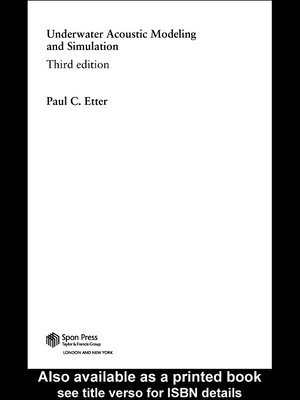
Sign up to save your library
With an OverDrive account, you can save your favorite libraries for at-a-glance information about availability. Find out more about OverDrive accounts.
Find this title in Libby, the library reading app by OverDrive.



Search for a digital library with this title
Title found at these libraries:
| Library Name | Distance |
|---|---|
| Loading... |
Underwater Acoustic Modeling and Simulation examines the translation of our physical understanding of sound in the sea into mathematical models that can simulate acoustic propagation, noise and reverberation in the ocean. These models are used in a variety of research and operational applications to predict and diagnose the performance of complex sonar systems operating in the undersea environment.
Previous editions of the book have provided invaluable guidance to sonar technologists, acoustical oceanographers and applied mathematicians in the selection and application of underwater acoustic models. Now that simulation is fast becoming an accurate, efficient and economical alternative to field-testing and at-sea training, this new edition will also provide useful guidance to systems engineers and operations analysts interested in simulating sonar performance.
Guidelines for selecting and using available propagation, noise and reverberation models are highlighted. Specific examples of each type of model are discussed to illustrate model formulations, assumptions and algorithm efficiency. Instructive case studies demonstrate applications in sonar simulation.
Previous editions of the book have provided invaluable guidance to sonar technologists, acoustical oceanographers and applied mathematicians in the selection and application of underwater acoustic models. Now that simulation is fast becoming an accurate, efficient and economical alternative to field-testing and at-sea training, this new edition will also provide useful guidance to systems engineers and operations analysts interested in simulating sonar performance.
Guidelines for selecting and using available propagation, noise and reverberation models are highlighted. Specific examples of each type of model are discussed to illustrate model formulations, assumptions and algorithm efficiency. Instructive case studies demonstrate applications in sonar simulation.







